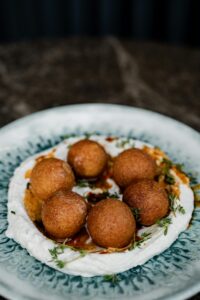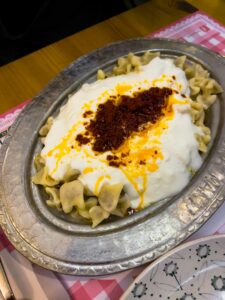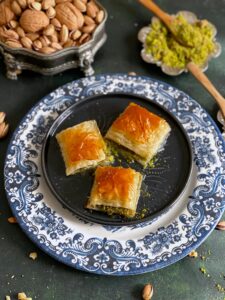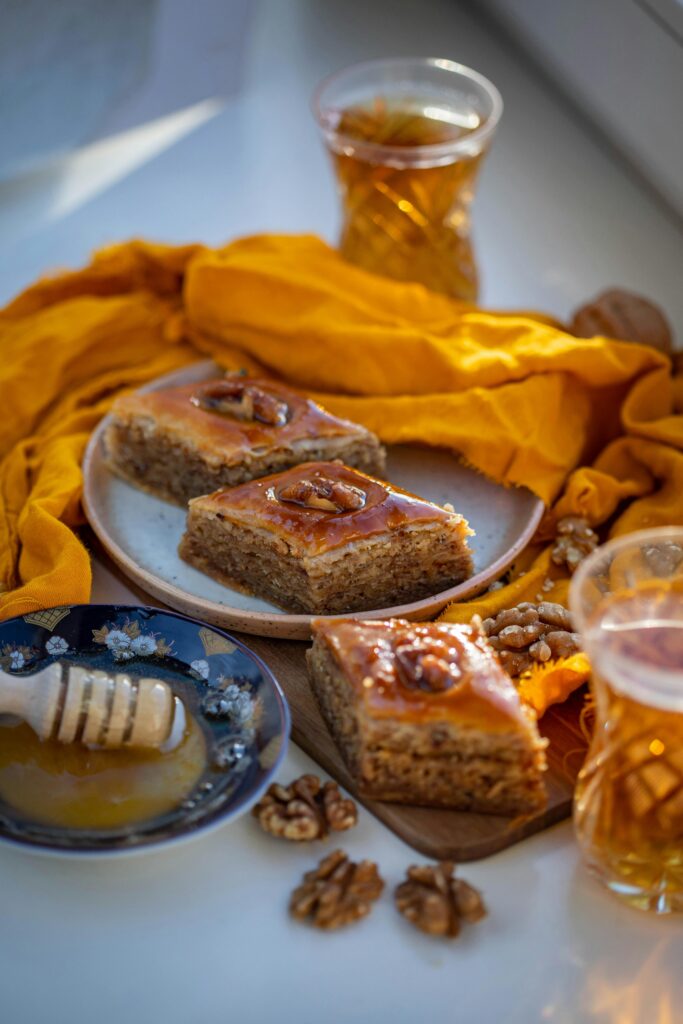Turkish cuisine is among the richest and most varied in the world, the product of centuries of cultural exchange from Central Asian origins to Mediterranean, Middle Eastern, and Balkan cuisine. Turkish cuisine, with the diversity of spices, fresh fruits and vegetables, and distinctive cooking methods, provides an unforgettable dining experience.
The Historical Origins of Turkish Cuisine
Turkish cuisine developed over the centuries due to the migration of Central Asian Turkic tribes, the Ottoman Empire’s golden age, and regional variety in present-day Turkey. Ottomans also made a valuable contribution to Turkish cuisine, as they combined Persia, Middle Eastern, North African, and European foods and preparations. It brought an elite and varied cuisine culture which continues to this day.
Main Ingredients of Turkish Cuisine
Turkish food is famous for the use of fresh and natural ingredients. Olive oil, yogurt, meat (lamb and beef are the most popular), vegetables, legumes, cereals, and fish are the staple ingredients of Turkish cuisine. Frequent use of spices like sumac, cumin, mint, paprika, and cinnamon gives flavor, and parsley and dill give freshness. Nuts like pistachios, almonds, and walnuts are also frequently used in savory and sweet dishes.
Famous Turkish food items
Kebabs
Turkey is renowned for having numerous kebabs in each part of the country as its specialty. The best-known one is the Döner Kebab, which is a mound of marinated meat cooked on a spit. The spicy hot minced meat Adana Kebab is found in southern Turkey, and the thinly sliced Iskender Kebab is served with yogurt, tomato sauce, and butter.

Mezes
Mezes are bite-sized, flavor-dense appetizers that are usually eaten with rakı (an anise-flavored spirit). Mezes consist of such foods as Hummus, Ezme (chili-spiced tomato dip), Haydari (herb and garlic-flavored yogurt), and Stuffed Grape Leaves (Dolma). They represent the harmony of Turkish flavor.
Pide and Lahmacun Also known as “Turkish pizza,” Pide is boat-shaped bread filled with meat, cheese, or vegetables. The thin variant of Lahmacun is ground meat, tomatoes, onions, and spices put on a crispy base. Both are tasty and easily available in street food stalls and restaurants.

Manti
Turkish Manti are small dumplings of dough containing seasoned ground meat within and consumed with yogurt, garlic, and a dash of butter spread with red pepper flakes. It is among Turkey’s home cooking tradition and especially in vogue in the central Anatolia.
Baklava and Turkish Delights
No investigation of Turkish cuisine would be feasible without the sweets. The most well-known among them are the baklava, which is a pastry of stacked phyllo covered with nuts and soaked in syrup. Kunefe, which is shredded phyllo dough, cheese, and sweet syrup, is another sweet staple. Turkish delight (Lokum) and Sütlaç (rice pudding) are also included in Turkish sweet cuisine. Turkish Culture of Coffee and Tea Tea (Çay) is a Turkish institution, served in diminutive tulip-shaped tulips. Turkish coffee, prepared from a unique pot called a cezve, is intense and thick and typically served with a minimal amount of Turkish delight. The unique manner and social aspect of the coffee have even been officially designated by UNESCO’s Intangible Cultural Heritage listing.
Conclusion
Turkish cuisine is a celebratory display of flavor, symbolizing history and multiculturalism. No matter what, whether it’s consuming a scorching hot kebab, enjoying a piece of baklava, or sipping on a Turkish coffee, every bite is a tribute to tradition and culinary innovation.



